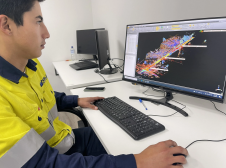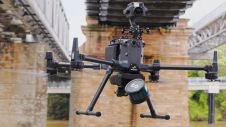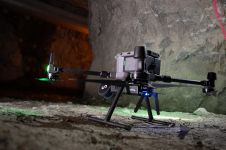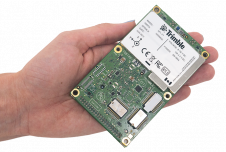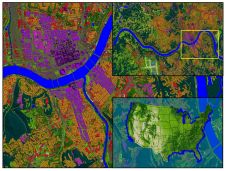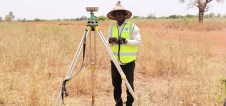Cadastral Renewal in Finland
The Challenges of Implementing LIS
In Finland between 2001 and 2005 a database was developed that includes a nation-wide cadastre as part of the Land Information System (LIS). No fewer than 87 parties were involved in this venture, and arriving consensus was a challenge. The main tasks of the LIS project were to transfer data, issue instructions, provide user training, develop an information plan and establish support services. The project took 58 man-years.
The LIS consists of cadastre and land register, the former holding data on all property and the latter containing data on the ownership of property (titles and leasehold information). Of the more than four hundred municipalities, more than 86 formerly maintained their own cadastres, while those of the others were maintained by the National Land Survey of Finland (NLS). The Ministry of Justice maintains the land register. Based on agreements, these participants used to copy their updated data to the old LIS at appropriate intervals. However, data from the various systems was not identical and the old LIS did not contain a cadastral map.
Preamble
The disadvantages of using distributed systems resulted in plans to develop a single nation-wide cadastre, including digital cadastral index map, to be maintained by each party within their own sphere of competence and be based on a browser-based information service enabling easy access. After passing of the Act on the new LIS, the NLS was obliged to set up, develop and maintain the system, and to manage the finances, all in collaboration with municipalities and the Ministry of Justice. In practice, the initiative fell under the auspices of three main projects: one dedicated to launch, one to system tools, and one to the municipality. The land register was not part of this reform and will continue to be maintained alongside the new LIS. The cadastral system currently comprises both the new and the old LIS, the old still containing the Land Register (Figure 1).
Test Phase
With 87 differing databases and practices for maintaining the cadastre and the cadastral index map, transferring the distributed data into one single database was the most challenging task. Since quality and completeness of data varied amongst the 86 participating municipalities, each was visited and with the help of district survey offices presentations given about the project and information collected. This operation was very successful, providing great insight into the volume of work and the need for change of system configurations; the latter requiring the involvement of system suppliers. Because of the disparate quality of data and to ensure smooth data transfer, a test was conducted which also prepared employees for the coming task. The test resulted in a list of data faults, which was sent to the municipalities to carry out corrections on the data.
Data Transfer
第一次被转移到新的LIS数据库佤邦s data from the NLS database, followed by data from the municipalities. The transfer went more quickly than anticipated, taking about three weeks per municipality; all participants appreciated the speed, because updates were not allowed during transfer. Corrections made by municipalities as a result of the test phase eased transfer. The transference of cadastral index map data was particularly hard work because every scrap of data had to be gone through municipality by municipality and boundary mark by boundary mark. Transferred data was also checked by software. Attribute data was transferred one municipality at a time from the old LIS to the new. After transfer the municipality concerned could begin regularly updating its data using the register-keeping application in the new LIS.
Training
广泛的员工,实现the new LIS required their being trained, and this had to take place immediately after data transfer. Four principal trainers and 26 local trainers were appointed. The training of register-keepers was particularly intensive; cadastral attribute and spatial data previously stored separately had now to be maintained together, so that various practices had to be synchronised. Employees also had to be trained in the content of the LIS and in using the browser-based LIS information service. The NLS arranged a total of 123 training sessions, taking 254 training days.
Instruction
To keep the project on track it was indispensable that instruction be given at every stage. Municipalities received instructions on revision of attribute and spatial data prior to the transfer exercise, and those carrying out the transfer received instructions on how to prepare data transfer. There were instructions for the code system and a description of the XML schema used during data transfer. An instruction manual was prepared for register-keeping and service provision. The rules for maintenance of the common cadastre and cadastral map are of primary importance; they define responsibilities and policies for operating within the new LIS environment, synchronising what is permitted and what forbidden in neighbouring register-keeping areas. The new LIS has led to partial reorganisation of one NLS support ser–vice. A centralised helpdesk will be on call during working hours to serve users of the register-keeping application, information services users, customers and NLS employees. A new customer-support division has been set up to handle user application forms and support customers experiencing administrative problems. A plan has been made to inform stakeholders concerning the LIS project, and detailed information plans have been drawn up every year during the project. Issuing information bulletins proved less effective than anticipated and meetings provided a more effective means of communication. The best results were obtained by visits to participating municipalities.
After Launch
The first year after launch is proceeding well, even given the necessity for some additional transfers. Register keeping fulfils the needs of the municipalities. The browser-based LIS information service, assimilated gradually, is very successful thanks to its ease and clarity of use. Users are able to use a single portal to search for cadastral data, cadastral map and land register; Figure 2 shows the user interface. About 1,300 NLS and municipal employees today use the register-keeping application. The browser-based LIS information service has about 5,500 users. Development of the new LIS will continue into the future and continuing collaboration between the parties is essential.
进一步的阅读
• Kokkonen, A., Vahala, M., 2002, The Cadastre as a Cornerstone in the Information Society Infrastructure. FIG congress proceedings, Washington DC.
• Lauhkonen H., 2006, What Challenges You Face When Taking into Use a Wide LIS System, FIG congress proceedings, Munich, Germany.
• Tarvainen T., Myllymäki T., 2006, Joint Use of Geographic Information – Cadastral Data, General and Topographic Map Data, FIG congress proceedings, Munich, Germany.
• Tella A., 2006, The New Land information System in Finland, FIG congress proceedings, Munich, Germany.
Make your inbox more interesting.Add some geo.
Keep abreast of news, developments and technological advancement in the geomatics industry.
Sign up for free





